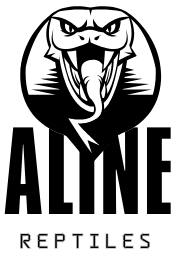If you’re thinking about bringing a corn snake into your home or are already the proud owner of one, you’re probably wondering, “How big do corn snakes get?” The answer to that question isn’t just about their size—it’s a crucial factor that affects their care, behavior, and the environment you’ll need to create for them.
Understanding the expected size of a corn snake is essential to ensure you’re fully prepared for the responsibility of owning one of these fascinating reptiles.
Corn snakes are one of the most popular snake species kept as pets due to their docile nature, striking appearance, and manageable size. But even though they are relatively smaller compared to other snake species, their growth pattern can still surprise new owners.
Whether you’re a first-time snake owner or an experienced herpetologist, knowing exactly how big your corn snake can get—and how to care for them as they grow—is key to a long and healthy life for your pet.
In this comprehensive guide, we’ll cover everything you need to know about how big corn snakes get, the factors that influence their growth, how to prepare for their growth stages, and much more. Let’s dive into the fascinating world of corn snakes and explore why their size matters when it comes to care and handling.
What Is the Average Size of a Corn Snake?

When asking, “How big do corn snakes get?” it’s important to understand that their size can vary depending on a number of factors. Generally, adult corn snakes reach an average length of 4 to 6 feet (1.2 to 1.8 meters).
The size of an adult corn snake is considered medium-sized for a snake, making them an ideal pet for those who want a snake that’s not too large to handle or maintain but still offers the fascination and beauty of a snake.
Typical Length and Weight Ranges
An adult corn snake usually grows to 4 feet by the time it’s around 2 years old, though some can reach up to 6 feet in length with proper care. A fully grown corn snake typically weighs between 500 to 1,000 grams (1.1 to 2.2 pounds), though this can vary depending on the individual snake’s health, diet, and genetics.
Growth Timeline: From Hatchling to Adult
Corn snakes start their life as hatchlings that are typically 10 to 15 inches long at birth. They grow rapidly during their early years, with most corn snakes reaching around 2 feet in length within their first year. After their first year, the growth slows down a bit but continues steadily until they reach full maturity around 3 to 4 years old.
Factors That Affect How Big a Corn Snake Gets
Several factors influence the size of a corn snake, ranging from genetics to environmental factors. Understanding these variables will help you predict and manage your corn snake’s growth effectively.
Genetics and Breeding
Genetics play a significant role in determining the size of your corn snake. Different morphs of corn snakes (such as albino, anerythristic, or bloodred) can have slightly different growth patterns, with some tending to be larger or smaller than others. Corn snakes bred from larger parents are more likely to grow bigger themselves, so it’s important to consider the lineage if you’re buying a snake from a breeder.
Diet and Nutrition
A corn snake’s size is largely determined by its diet. These snakes are non-venomous constrictors and eat a diet that primarily consists of mice and rats. If a corn snake is fed appropriately, it will grow steadily to its optimal size.
However, feeding them too much food or offering too large prey can lead to obesity, which can stunt growth and cause health problems. On the other hand, insufficient feeding or an imbalanced diet can also lead to stunted growth. A well-balanced diet is key to healthy growth.
Environment and Habitat Size
The size of the snake’s enclosure plays an important role in its overall health and growth. Providing enough space allows your corn snake to move freely, which contributes to healthy muscle development and overall well-being.
A cramped enclosure can lead to stunted growth and behavioral issues. Hatchlings can be kept in a 10-gallon tank, but as they grow, you’ll need to move them to larger tanks (20–40 gallons for adults) to accommodate their size and active lifestyle.
Size and Behavior: What to Expect from a Full-Grown Corn Snake
When a corn snake reaches its adult size, their behavior and needs will evolve. Understanding these changes will help you continue to care for your snake appropriately as it grows.
Behavioral Changes at Different Sizes
A hatchling corn snake (less than a year old) is quite small and shy, but as it grows into a juvenile, it becomes more active and may begin exploring its environment more assertively. By the time it’s an adult (around 3 to 4 years old), a corn snake is more confident, but still remains relatively docile. Corn snakes are known for being friendly and gentle, making them great pets for handling—especially when they reach their full size.
However, you may notice slight differences in temperament depending on the size of your snake. Larger corn snakes may be more cautious during handling, but most remain calm once they’re accustomed to their environment.
Handling Full-Grown Corn Snakes
When your corn snake reaches 4–6 feet in length, handling it requires more care. Larger snakes can become more cautious and less tolerant of mistakes, so it’s crucial to handle them gently. Here are a few tips for handling a full-grown corn snake:
- Support their entire body: Always ensure you support both the head and tail when handling a larger snake.
- Use both hands: A 4–6-foot corn snake requires more space to move comfortably, so use both hands to prevent stress.
- Avoid sudden movements: Large corn snakes can get startled, so avoid fast or jerky movements.
How to Prepare for a Corn Snake’s Growth

As your corn snake grows, you need to make several adjustments to its environment and care routine. Here’s how to prepare for their growth:
Choosing the Right Size Enclosure
The space in your snake’s enclosure should expand as it grows. For hatchlings, a 10-gallon tank will suffice, but as your snake grows into its juvenile and adult stages, a 20 to 40-gallon tank will be necessary. Larger enclosures allow for proper exercise, exploration, and behavioral enrichment.
Providing Proper Heating and Lighting
Corn snakes are cold-blooded creatures, so they require a heat source to maintain their body temperature. The ideal temperature for a corn snake is between 75–85°F (24–29°C), with a basking spot of around 90°F (32°C). A heat mat or heat lamp can be used to achieve these conditions. Proper lighting and heating will support your snake’s health and proper growth.
How Big Is Too Big? Understanding Space and Handling Limits
While corn snakes are relatively manageable in size, it’s still important to consider when their size might become overwhelming for owners. A 6-foot corn snake can be difficult to handle, and providing an appropriately sized enclosure becomes increasingly important. Here’s what you need to know:
When Corn Snakes Reach Their Maximum Size
A fully-grown corn snake typically maxes out at 6 feet. It’s important to recognize this milestone and ensure you have an appropriate space for them at that point. If your snake is too big for its enclosure, it can become stressed and may not thrive.
Assessing Your Home Space for a Full-Grown Snake
Consider the space in your home. While a full-grown corn snake won’t require as much space as a larger snake species, you’ll still need to ensure you have enough room to house a large enclosure. Think about where you can place a tank that allows for proper ventilation, temperature control, and access for regular cleaning.
Frequently Asked Questions (FAQ)
How long does it take for a corn snake to reach full size?
- On average, corn snakes reach their full size at around 3 to 4 years of age. They grow quickly in their first year but slow down in the subsequent years.
Can corn snakes grow longer than 6 feet?
- While 6 feet is considered the maximum length for most corn snakes, there are occasional reports of corn snakes reaching slightly longer sizes, but this is rare.
What if my corn snake isn’t growing as expected?
- If your corn snake isn’t growing at the expected rate, it could be due to insufficient food, an inappropriate environment, or health problems. Make sure your snake is eating well, the tank is the right size, and the temperature is suitable for optimal growth.
Are corn snakes dangerous when they grow big?
- No, corn snakes are non-venomous and are known for their docile nature. Even large corn snakes remain relatively calm and easy to handle, making them excellent pets for snake enthusiasts.
Conclusion
Understanding how big do corn snakes get and what to expect as they grow is crucial to providing the best care possible for your pet. From proper nutrition and habitat to handling and enclosure size, every detail matters in ensuring your corn snake grows into a healthy, happy companion. With the right preparation and care, your corn snake will thrive, whether it’s a small hatchling or a full-grown adult.
By following the guidelines outlined in this guide, you’ll be well-equipped to handle the growing needs of your corn snake. Remember, the bigger they get, the more responsible and mindful you must be of their needs. With proper care, your corn snake will live a long, healthy, and comfortable life in your home.

